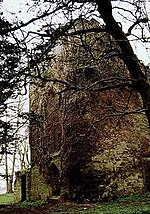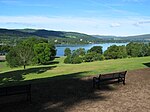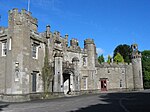Dumbarton (district)
1975 establishments in Scotland1996 disestablishments in ScotlandDistricts of ScotlandDumbartonHelensburgh ... and 6 more
Politics of Argyll and ButePolitics of West DunbartonshireStates and territories disestablished in 1996States and territories established in 1975StrathclydeVale of Leven

Dumbarton (Scottish Gaelic: Dùn Breatainn) was, from 1975 to 1996, one of nineteen local government districts in the Strathclyde region of Scotland, covering the town of Dumbarton and surrounding areas to the north-west of Glasgow.
Excerpt from the Wikipedia article Dumbarton (district) (License: CC BY-SA 3.0, Authors, Images).Dumbarton (district)
Geographical coordinates (GPS) Address Nearby Places Show on map
Geographical coordinates (GPS)
| Latitude | Longitude |
|---|---|
| N 56.01 ° | E -4.63 ° |
Address
Auchendennan Muir
G83 8RB
Scotland, United Kingdom
Open on Google Maps











